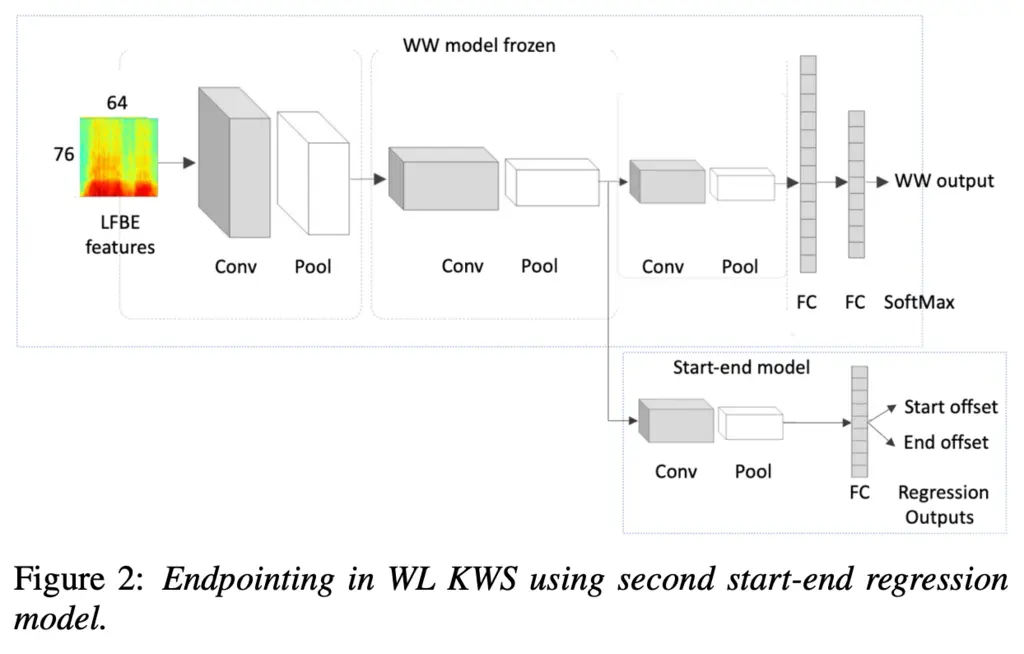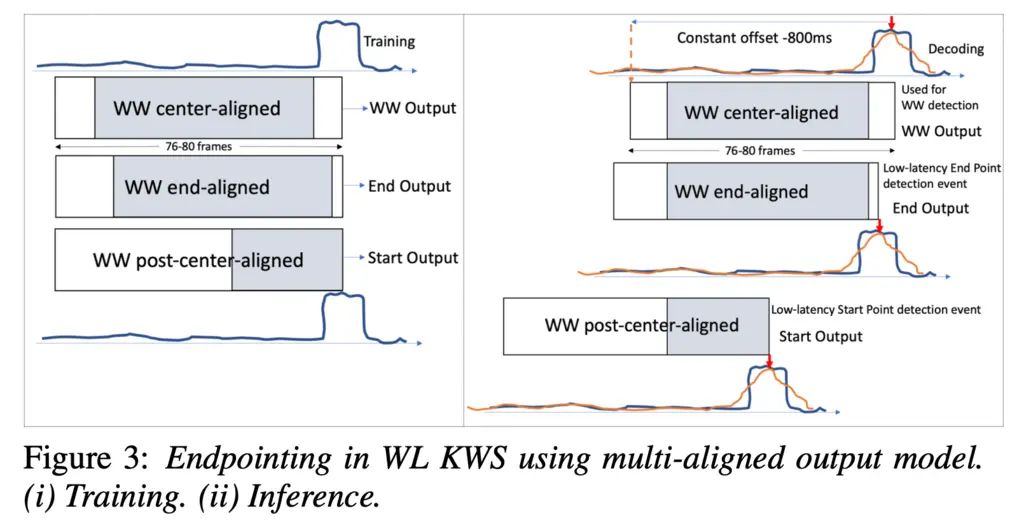Three Important Things
1. Start-end Regression Model
The authors introduce two types of architectures for wake word (WW) detection. The first is the start-end regression model, where the input signal is passed through several stacked convolution and pooling layers, before forking off into two different outputs, as illustrated in the diagram below.

The first set of outputs is the probability that a wake word exists, and the second set of outputs is the start and end offsets of the wake word, normalized such that \([0,1]\) represents the window of the input.
The two outputs share most of the same backbone in the network, due to the belief that the network has learned useful representations that will help with both downstream tasks.
2. Multi-aligned Output Wake Word Model
The second architecture is the multi-aligned output WW model. In this architecture, instead of just detecting whether a WW exists, it detects three things:
- Start of the WW
- End of the WW
- Main detector of the WW (centrally aligned)

Note that the combination of these three detection outputs means that it is no longer necessary to output the regression of where the start and end of the wake word is detected.
This architecture was found to perform the best in WW detection.
3. Pseudo-Ground Truth Labels for Training and Evaluation
Due to the difficulty of annotating WW endpoint labels, the authors used the then state-of-the-art acoustic model + Hidden Markov Model keyword spotter (AM+HMM KWS) to label the data as pseudo-ground truth labels.
Most Glaring Deficiency
The labels used are not ground truth labels but rather pseudo-ground truth labels, which may affect the reliability of the results obtained.
Conclusions for Future Work
Instead of just detecting for a particular feature in inputs, we could decompose it into detecting different parts of the feature. In the case of sequential data, we could break it up into start, middle, and end like for the multi-aligned output model in this paper. This also has the advantage of lower latency for detecting the start of the feature, which could help to improve the user experience for latency-sensitive applications.